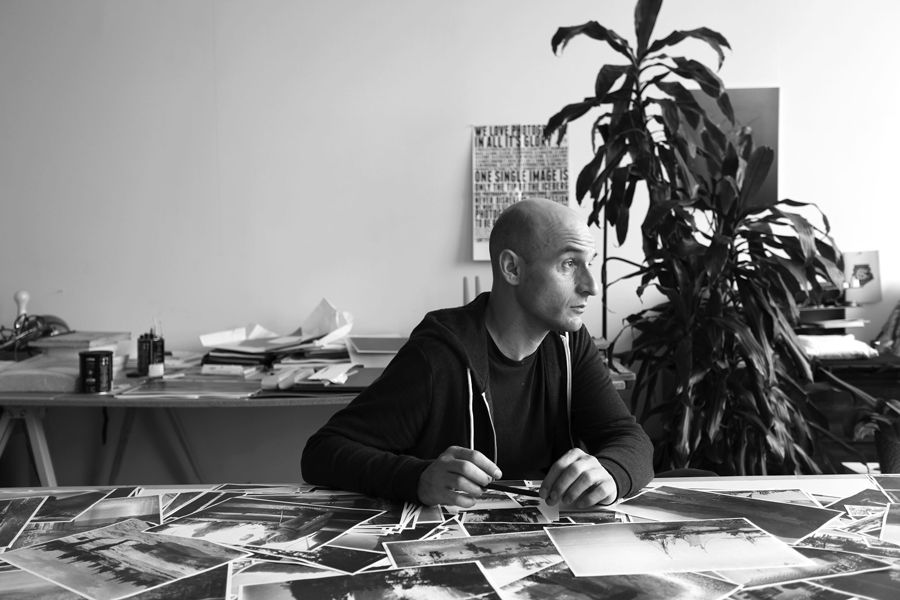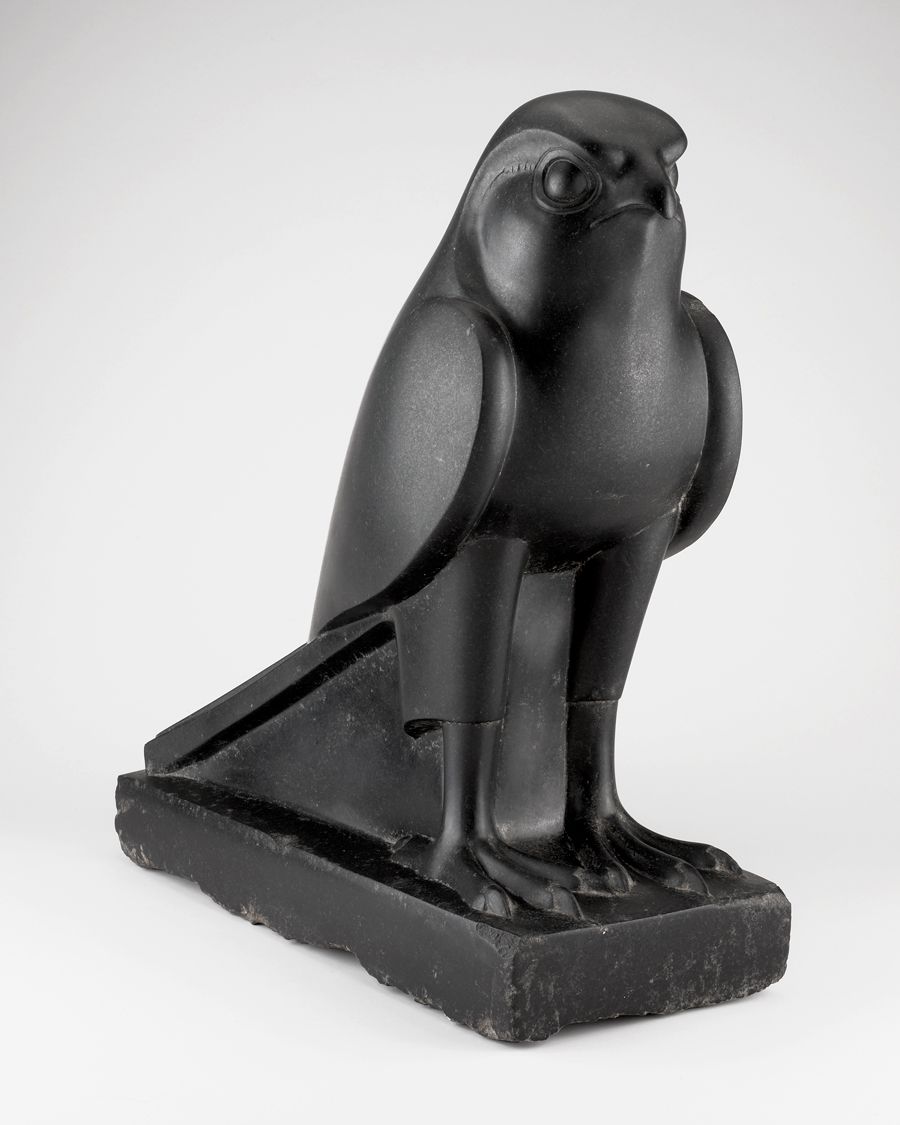In the Museum with Jan Tichy
Statue of Horus (332–30 BCE)
Statue of Horus, Ptolemaic Period (332–30 BCE), Egyptian, basalt, 20 1/2 × 19 × 7 3/8 inches, The Art Institute of Chicago, Gift of the Alsdorf Foundation
Statue of Horus, Ptolemaic Period (332–30 BCE), Egyptian, basalt, 20 1/2 × 19 × 7 3/8 inches, The Art Institute of Chicago, Gift of the Alsdorf Foundation
by Zoya Brumberg (MA 2015)
The ancient Egyptian Statue of Horus (332–30 BCE), a carved idol of a falcon in black monochrome basalt, stands watch over the Art Institute of Chicago’s collection of antiquities.
It greets visitors as they move into the central galleries of the museum. When he was a graduate student at the School of the Art Institute of Chicago (SAIC), Professor Jan Tichy (MFA 2009) remembers Horus looking over him, a constant in his museum visits. The Art Institute of Chicago’s placard describes the piece’s religious and historical significance; the falcon was considered to be the earthly manifestation of Horus, god of the rulers of ancient Egypt. It is a story of mythology, but as Tichy observes, “not really about the work” at all.

Jan Tichy. Image courtesy of Mana Contemporary
Jan Tichy. Image courtesy of Mana Contemporary
Museums display art, but they also tell stories and histories. And sometimes, what they don’t tell us can inspire creativity—new art and scholarship in its own right. As a sculptor and photographer, Tichy reframed Horus in the language of light and space for his 2012 exhibition MATRIX 164 at the Wadsworth Atheneum Museum of Art in Hartford, Connecticut. One wall of the exhibition is lined with large-scale photographs of Horus against a dark background. The room is illuminated by projected light that moves and changes in intensity. Horus comes in and out of view as the light around the statue changes. As the room brightens, darkens, and moves, the static images seem to change as well. Horus appears in many lights. The Statue of Horus is a god, an artifact, a mythology, a piece of a personal collection, a gift, and now, the unexpected subject of a contemporary art exhibition. Decontextualized, it is also just a figure of a bird.
When Tichy brings his students into the museum, he always points to the Statue of Horus and “shares his friend’s untold stories.” Visiting the museum is more than an art history lesson. It is an exercise in how to look and see—how to excavate meaning through what is presented as well as what is hidden. ■


